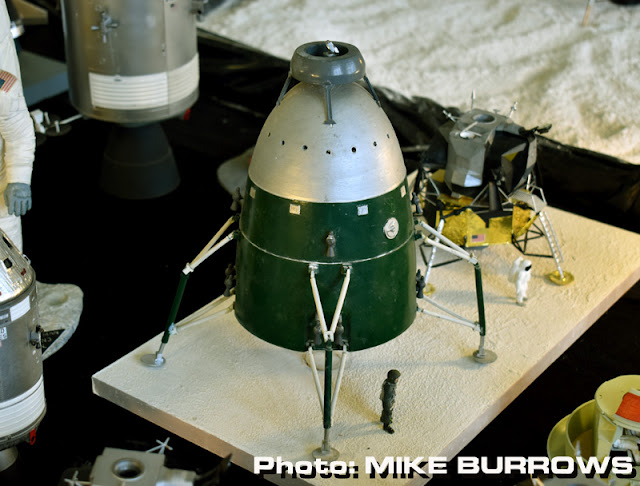Seen through the lens of the media frenzy currently celebrating the 50th Anniversary and comparing the technology to the current advancements, the Saturn V, L.E.M and Apollo module all look a little dated and somehow archaic. However, this was bleeding edge technology at the time, at the point when President Kennedy announced America's intention to reach the Moon and land a crew there, nobody actually thought it was possible. Probes had been directed to the Moon and missed, sailing off helpless into the darkness, whilst others had crashed into the lunar disk. Gagarin had orbited the Earth by the skin of his teeth and US attempts to better the flight had been inferior and rushed.


The race to land a man on the moon meant that the project to build the means of transport was outsourced to several companies, to provide tenders and designs for the actual vehicles. In the run up to the landing, speculation was rife as to what the LEM, or Bug as it eventually became affectionately known, would look like.
News articles and programmes like BBC's Tomorrows World with Raymond Baxter and James Burke, showed images and models of how the LEM might look and it was exciting to see the classic 'space capsule' type designs that were presented. Given that the toy industry had seized the idea of the Space race already, capsules and rovers were adorning shop shelves in abundance, so I expected the moon landing vehicle to be a streamlined, windowed capsule, from which Armstrong and Aldrin would leisurely emerge, stretch their legs and amble about on the lunar surface, planting flags and collecting rocks.
But given the headlong rush to complete the project and the unfortunate loss of the Apollo 1 crew during a ground based test, setting the work back considerably, the final design of the craft was dictated more by necessity and function, than aesthetics.
Its amusing to see some of the initial designs put forward by various companies, for prospective landing vehicles, some taking a cue from Arthur C. Clarke and the BIS initial proposal for the lander, others looking decidedly fanciful.
I recall being seriously disappointed when the final LEM design was released, to me it seemed to be a hodge-podge of industrial looking elements and boxy framework, hastily cobbled together on a square base. listening to the accounts of the NASA teams on modern TV recently, it seems this might not have been far from the truth!
Having been fed a stylised and glamorous view of the space race from film, TV and toys, my perception of the spacecraft was much more in keeping with the kind of craft I had seen in 2001: A Space Odyssey or George Pal's Conquest of Space, where astronauts looked serene and comfortable in their ships, not shoehorned and cramped into the tight confines of tin can technology.
As I grew more accustomed to the shape of the Bug and more and more toys arrived reflecting the actual vehicle which in a few years time would settle finally on the lunar surface, I learned to appreciate its odd angles and asymmetry.
And so, 50 years on, the Bug has earned its place in aerospace history and may have been supplanted by more streamlined and modern designs, but its achievement has not been bettered and its descent stage still sits patient and silent on the regolith, waiting for the next generation of visitors to arrive.



















































